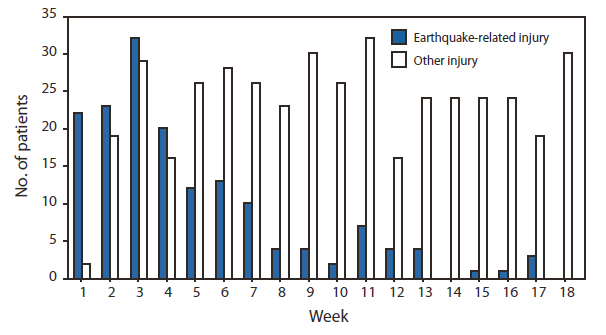* Available at http://emergency.cdc.gov/masscasualties/bombingform.asp.
† Medical history documentation might include, for example, the physician writing "found in rubble." A mechanism reasonably consistent with an earthquake-related cause might include, for example, "injured by wall of bricks falling on patient."
 ShareCompartir
ShareCompartir



